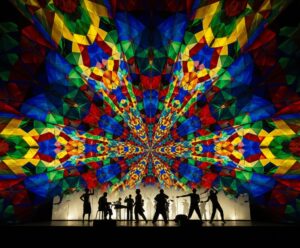
The performing arts are a stage for passion, expression, and storytelling. They draw people from all walks of life, including many who are neurodivergent. Understanding neurodivergence is key to creating a truly inclusive and supportive environment where everyone can thrive.
What is Neurodivergence?
Neurodivergence is a term that describes variations in the human brain regarding sociability, learning, attention, mood, and other mental functions. It’s not a disorder or a deficit; it’s simply a different way of processing the world. The term was coined to promote acceptance and challenge the idea that there is only one “normal” or “typical” brain.
Neurodiversity includes a wide range of conditions, such as:
- Autism Spectrum Condition: A developmental condition that can affect social interaction, communication, and behavior. Autistic performers may bring a unique perspective to their roles and possess a keen eye for detail.
- ADHD (Attention-Deficit/Hyperactivity Disorder): A neurodevelopmental condition characterised by a persistent pattern of inattention and/or hyperactivity-impulsivity. Performers with ADHD often have a boundless energy and creativity that can be harnessed on stage.
- Dyspraxia (Developmental Coordination Disorder): A condition affecting physical coordination. While it may present challenges with certain dance moves or physical tasks, it often co-occurs with great creativity and strong verbal skills.
- Dyslexia: A learning disorder that where individuals may find it challenging to learn lines from a script due to difficulties with reading, but they often excel at auditory memorization and can bring a unique creative perspective and rhythm to their performances.
How Neurodivergence Manifests in the Performing Arts
Neurodivergence can influence a performer’s experience in many ways, both challenging and empowering.
Challenges:
- Sensory sensitivity: The bright lights, loud music, and physical contact of a performance can be overwhelming for some.
- Social and communication differences: Navigating social cues in a rehearsal room or a fast-paced audition can be difficult.
- Executive functioning: Planning, organising, and managing time—all crucial for a production—can be a challenge for some neurodivergent people.
Strengths:
- Hyperfocus: Many neurodivergent individuals can intensely focus on a task they are passionate about, leading to exceptional dedication and skill mastery.
- Unique perspective: A different way of seeing the world can lead to innovative and original interpretations of characters and scripts.
- Creativity and passion: Neurodivergent performers often have a deep, unwavering passion for their craft and can bring an incredible level of creativity to their work.
Ultimately, neurodivergence is a part of the rich tapestry of human experience. By understanding and embracing it, we can create a performing arts community that is not only more inclusive but also more vibrant and creatively dynamic.